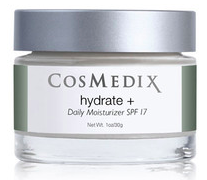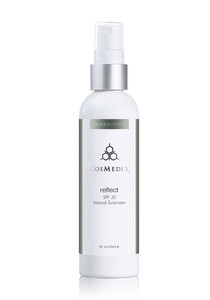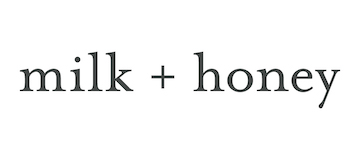Get physical in the fight against sun damage. We care about you and your skin’s health. As the weather warms up and we spend more time outside, we want you to be protected against the sun’s harmful rays. Here is what your favorite Spa Partisans use:
These CosMedix products are available at milk + honey and our online store.
 Hydrate + (Daily Moisturizer SPF 17)
Hydrate + (Daily Moisturizer SPF 17)
This light, daily antioxidant moisturizer hydrates the skin while helping to protect it from sun exposure. With an advanced zinc oxide and natural antioxidant formula, Hydrate + provides exceptional UV protection without irritating synthetic chemicals.This light, daily antioxidant moisturizer hydrates the skin while helping to protect it from sun exposure. With an advanced zinc oxide and natural antioxidant formula, Hydrate + provides exceptional UV protection without irritating synthetic chemicals.
Serious Protection (SPF 28 Sunscreen)
Whereas most conventional sunscreens only protect against surface, sun-burning UVB light, Serious Protection’s guard extends to deeper skin layers vulnerable to photoaging. Containing a non-irritating, chemical-free, titanium dioxide and zinc oxide formula, this broad spectrum solution effectively shields against both UVA and UVB light to keep skin naturally safe.
 Reflect (SPF 30 Natural Sunscreen)
Reflect (SPF 30 Natural Sunscreen)
Reflect offers broad spectrum SPF 30 protection in a non-irritating, oil-free formula. Combining micronized titanium dioxide—nature’s own sunscreen—with two skin-specific antioxidants, Reflect provides lightweight UV protection on the go – perfect to throw in your gym bag.
Sun Smart Skin from the Esthetician’s Point of View
By Victoria Wigg, LME CosMedix
Through the ages, having a sun tan has gone from being undesirable to being a show of status. However, as we better understand the damage caused to our DNA from overexposure to ultraviolet light, we recognize the danger behind the beauty of sun-bronzed skin.
Every time we step into the sun, we battle three different waves of ultraviolet light—UVA, UVB and UVC. While UVB is the wave responsible for tanned skin and sunburns, all three, in excess, damage the skin. This damage can range from premature wrinkles, hyperpigmentation and the breakdown of elasticity to DNA damage and even skin cancer. While the effects sometimes take years to show up, many experts believe the majority of damage occurs in the first twenty years of life. Fortunately, by utilizing proven ingredients daily, you can help prevent and reverse many of the signs of trauma.
Sunscreen is a critical part of skin protection. There are certain factors to look for when choosing a sunscreen. For instance, is the active ingredient mineral or chemical-based? Common chemical forms include avobenzone (parsol 1789), octinoxate, octisalate, octocrylene, oxybenzone, ecamule (Mexoryl SX), homosalate, Padimate A and Padimate O. In contrast, there are only two mineral sunscreens approved by the FDA—titanium dioxide and zinc oxide.
Chemical sunscreens work by absorbing the sun’s rays, while mineral sunscreens reflect them away from the skin. For this reason, many skin professionals today recommend the mineral form, which is also available in certain mineral makeup.
When it comes to combating the signs of damage, antioxidants are essential. UV overexposure often creates free radical cascades where highly unstable molecules with unpaired electrons tax the body. Antioxidants help relieve this stress by sacrificing an electron to neutralize the free radical threat. Look for tetrahydrocurcumonoids, oat glucan, D-alpha tocopherol, tocomin, astaxanthin, gluconolactone, and my favorite, L-superoxide dismutase, when comparing products. Other reparative ingredients to consider include aminoguanidine, aloe vera, copper complex and niacinamide.
Restorative treatments, like exfoliating facials, chemical peels, intense pulsed light and laser treatments, work to correct past damage. Effective corrective ingredients include vitamin A, lactic acid, malic acid, tartaric acid, azelaic acid, arbutin, L-ascorbic acid (vitamin C), cassia beta glycan and epidermal growth factors.
Despite the effectiveness of today’s treatments, it is still much easier to protect the skin than to reverse the signs of damage. Using proper sunscreen, avoiding the sun at the highest point of the day—11 a.m. to 3 p.m.—wearing a large brim hat and using an umbrella are sensible ways to enjoy the sunshine and soak up a little vitamin D without reaping all of the negative benefits of UV exposure. For existing sun damage, see a licensed skin professional for a complete analysis of your skin and recommendations on how to correct it.

